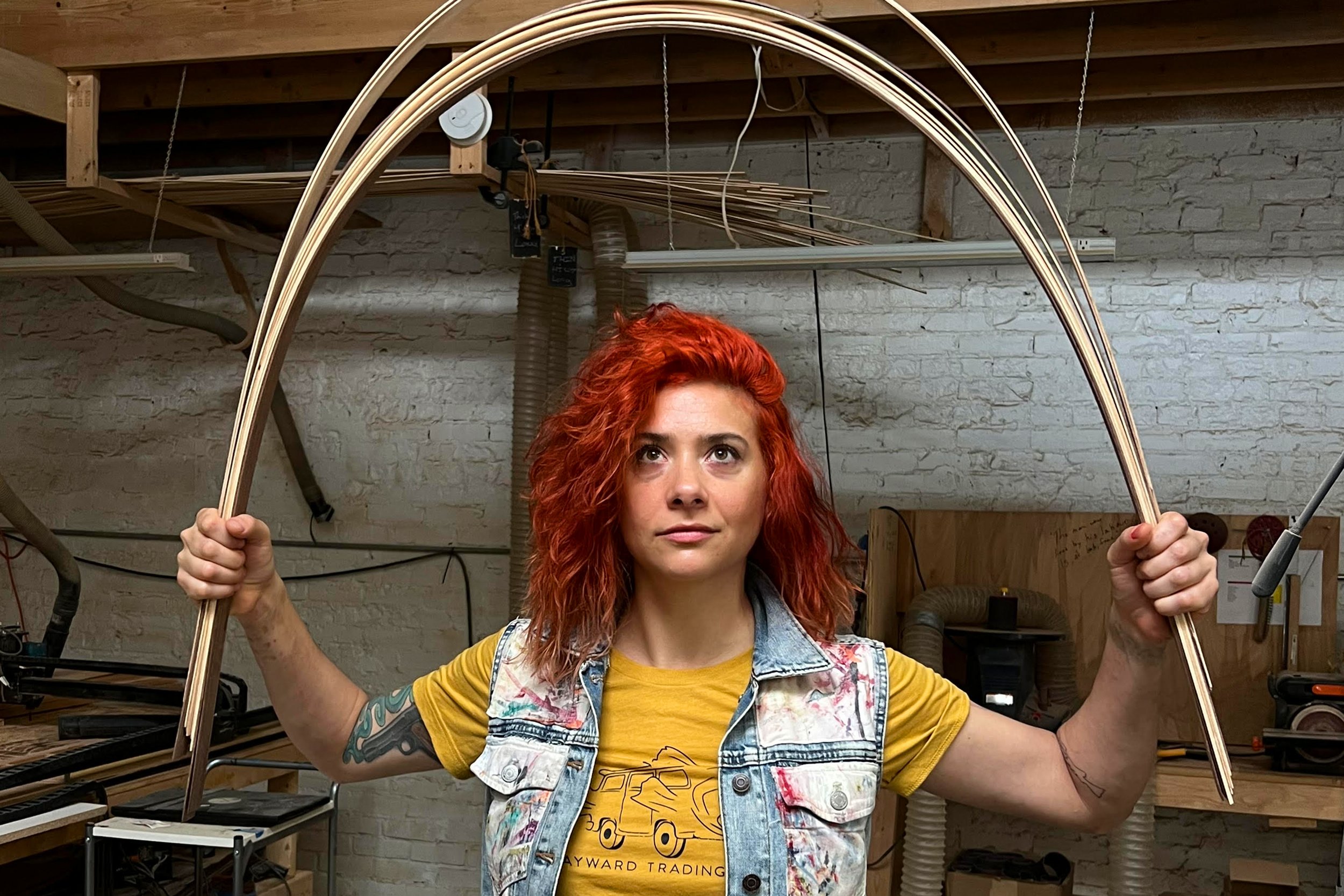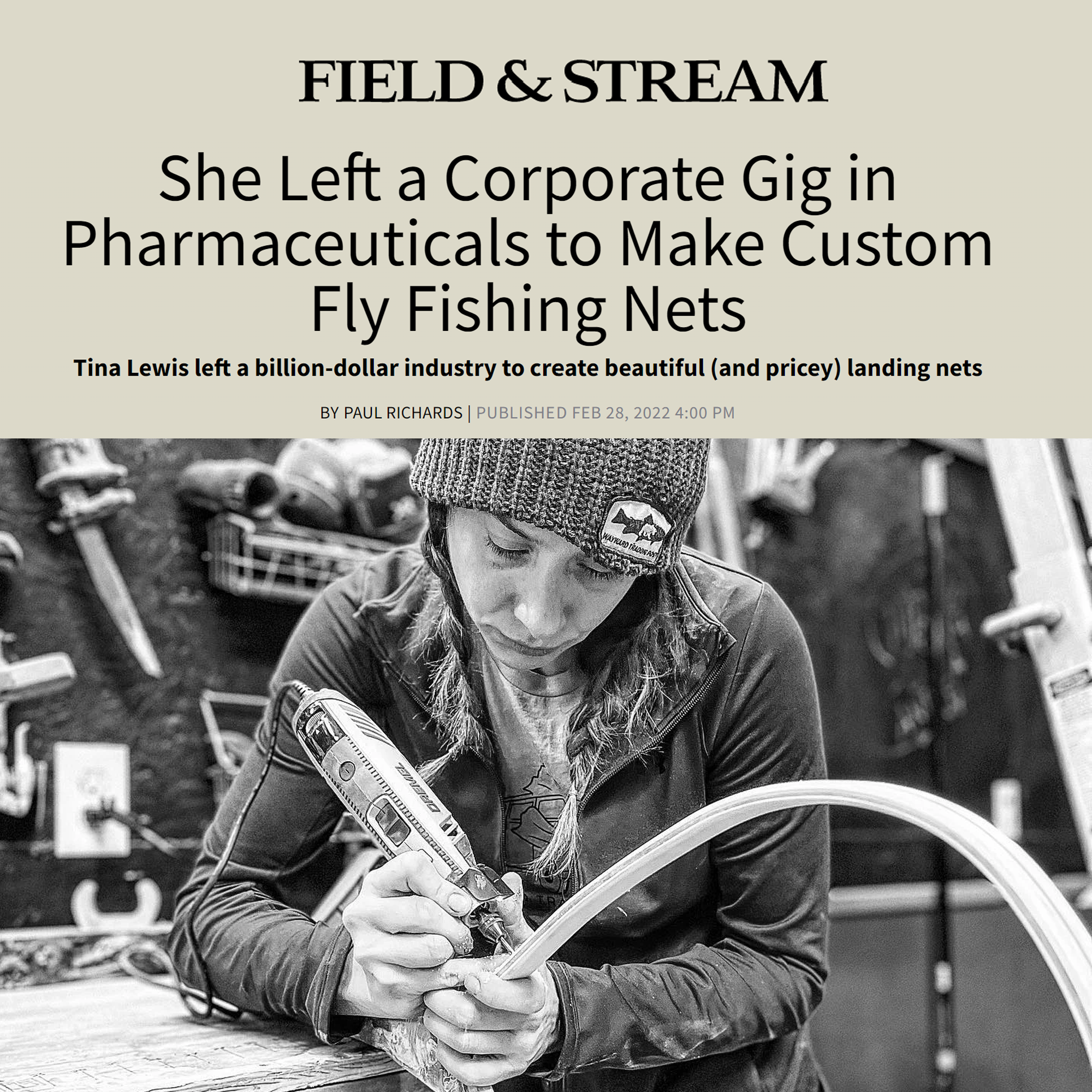Who I am
My name is Tina Lewis. I make functional art. As a young girl, my fingernails were always stained by charcoal, paint, or dye. My dream was to become an artist. Somehow along the way, the true desires of my heart took second place to "making a living" and I fell into the corporate America abyss.
I spent 15 years giving presentations, traveling to meetings, drinking airport coffee, spending countless hours focusing on unfulfilling things and climbing that oh-so-important corporate ladder. I felt like an imposter. I snuck in the back door, covered my tattoos with a blazer and no one noticed for over a decade. Besides the struggle to be the person I was meant to be, I learned that the hard part of corporate America was stepping out of the economic safety net. I knew I had to jump in with both feet, but I was bound to get mud on my shoes.
My family is salt of the earth Philadelphians. Hard-working people making their living through small businesses. I wanted the freedom to pave my way. I wanted that personal sense of fulfillment. I toyed with a few different projects and held my dream to find a way to draw and create to earn a living. When I saw that opportunity I took it. I knew this was the time to step out of my safety net.
The First Fat Jake
I have always kept an art studio space where I could take off my corporate mask and be myself. Many of my friends reach out with random projects. One of those happened to be a custom fly fishing net. When the final wooden landing net was sitting on the workbench I was inspired to put a final touch on it and I carved a design into it. I kept getting drawn back to the project, revisiting and thinking "maybe I can add some colored epoxy, what if I did an accent here, perhaps some shape to this." The result was bright green fish with orange accents. It was striking and it moved me more than I had anticipated it would. That net was going to live a full life. That net was going to leave my studio and go to work. It seemed real. Functional art meets illustration. There was a purpose and personal meaning to the people who owned it. To put it simply it seemed special. So of course, I started thinking of how far I could push this medium.
The internet, as scary a place as it can be sometimes, proved to be the perfect testing ground enabling me to see how many people loved the net. I started taking orders almost immediately. Initially, my goal was to develop the art inlay process. There wasn’t anything like it so I had to get some projects into the studio so I could work through the functional parts of the process. Finally, I was spending my countless hours learning and developing this process. I felt more alive at that moment than I had in years. I was making something that didn’t exist before my effort.
The fly fishing community is a dramatic shift from the corporate world. They remind me of my Dad and Grandfather. It brought back wonderful memories we shared when I was younger. My pop-pop worked for the Pennsylvania Fish and Game Commission, and my father was an avid outdoorsman. Many people may not think that Philadelphia has a lot of opportunities for such things, but the city is surrounded by beautiful lands. Pennsylvania offers some of the best fishing in the country. There was a business to be made here, and I had to decide if I was going to continue to play it safe or play it my way. So far, no regrets.
Making Functional Art
Net making and finely detailed epoxy illustrations have one thing in common. They both require the artist to make a circle fit into a square. Wood bending comes in many forms. My craft starts with the log that has to be cut in a particular fashion or it will not bend as well as it should. Traditional bending methods require steam or moisture to make the wood flexible enough to create the net hoop.
Geographically speaking, I hit the lottery. Lancaster Pennsylvania is one of the best lumber sourcing areas you could ask for, and I always get the wood I search for.
My epoxy illustrations are finely detailed. Epoxy is unlike anything else I have ever worked with. When most people think of working with Epoxy, they think of volume. Pouring a bucket of epoxy onto a table or what have you. I often use as little as would fit on the head of a sewing needle.
I’ve done some wild stuff over these few years. I got to put a man’s army medal into a wooden purpleheart handle which was amazing. I also got to put family pets into everlasting epoxy glory. Every phone call I receive has a new challenge that stretches and builds my skills and that process is fulfilling.









